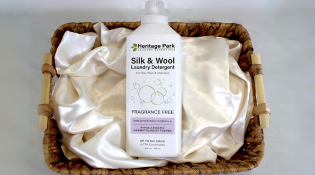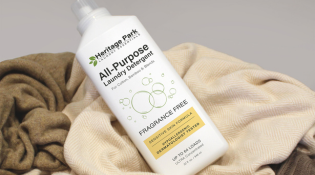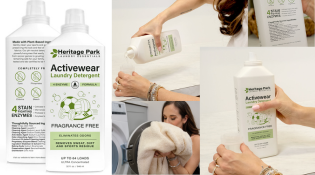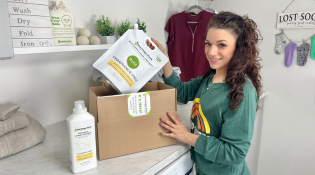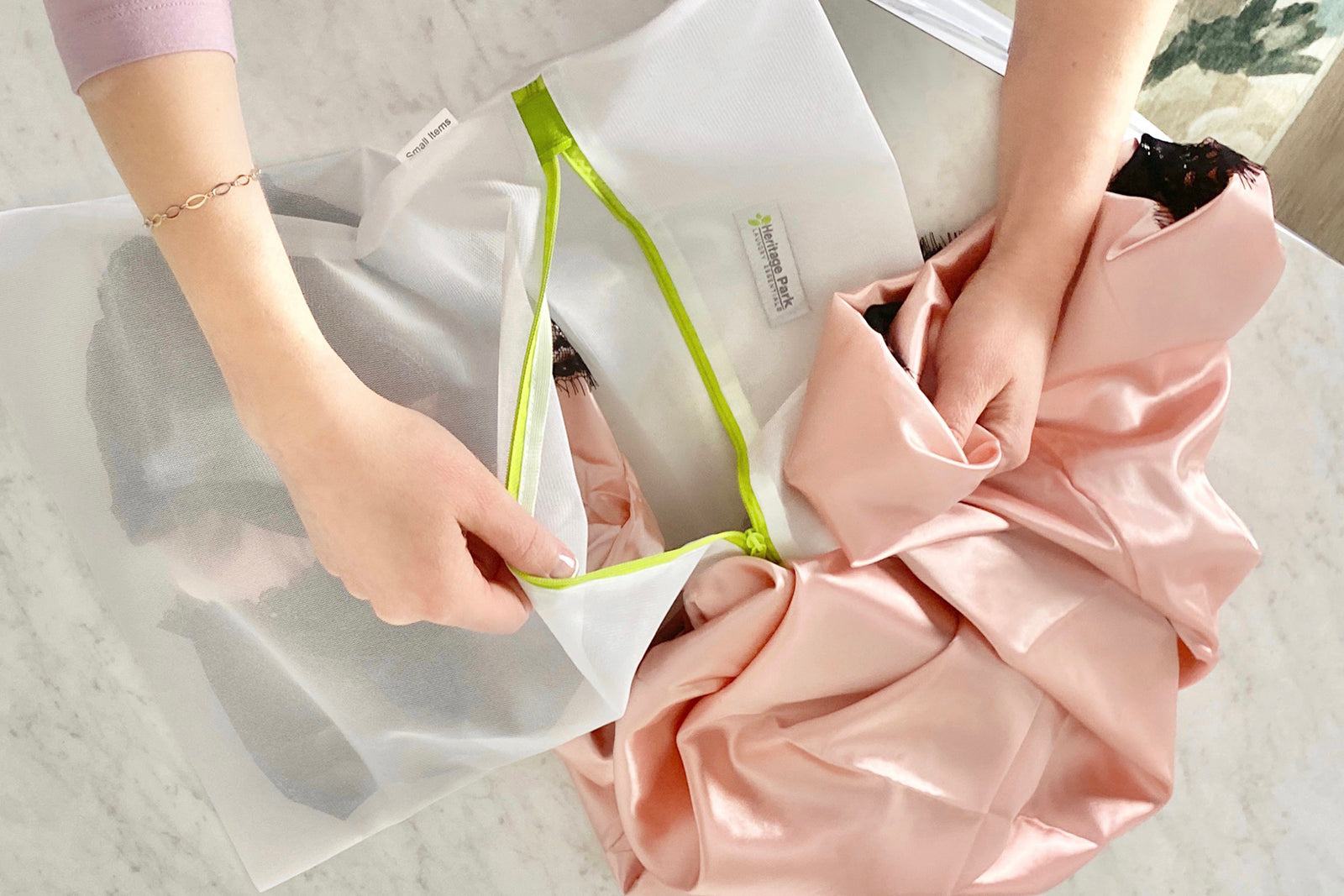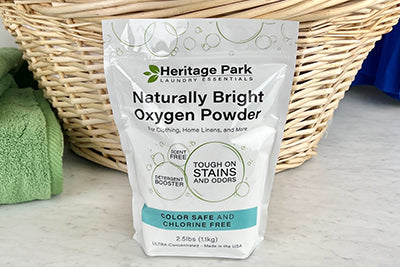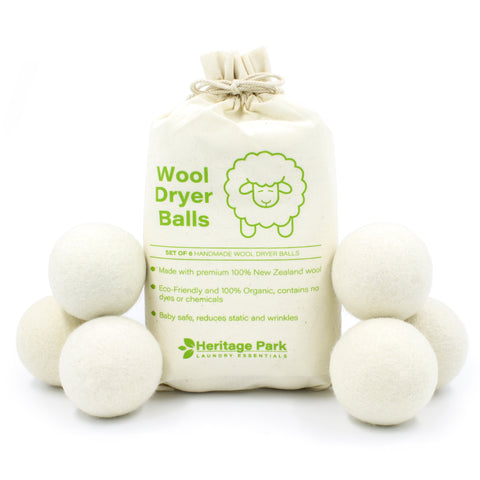Does your front-load washer smell? Keep your front-load washing machine running clean and smelling fresh with these simple tips from the experts at Heritage Park Laundry Essentials.
Key Takeaways
|
Front-Load Washing Machines: The Good and the Bad
Front-load washers are very popular because they use less water and are gentle on your laundry. Front-load washing machines account for nearly half of all washing machines sold in the United States. They lock your laundry in a horizontal drum that tumbles your load through the wash, rinse, and spin cycles using only a small amount of water. And with no agitator on board, there's much less chance of damage like snags and tears. They also do a very good job of wringing water from wet clothes and laundry, which cuts down on drying time. Front-loaders are energy efficient, better for the environment, and gentle on even the most delicate washables. A win all around!
There's a lot to love about front loaders...except the bad smell. Ask anyone who owns one. Even the most dedicated front-loader fan will tell you that--sooner or later--they give off an unpleasant smell. That musty, moldy odor is the dirty little secret lurking behind the door of every front-load washer. If your front loading washing machine has you holding your nose, you're not alone, and there is a fix for your smelly washer. These simple tips from Heritage Park Laundry Essentials will help you banish washer odor and get your machine -- and laundry -- back to smelling sweet in no time.
Identifying the Source of Front-Loader Smell
With all that's wonderful about front loaders, their stale musty smell seems to be a part of the package. The very thing that makes these machines so efficient and eco-friendly—the horizontal tumbling drum -- is the culprit. Over time, water, soap scum, and other laundry products build up inside the drum and components of the washer. This lays the perfect breeding ground for mold and mildew: dark damp, and grimy. Eventually, this smell can even transfer to laundry, leaving it smelling musty right out of the wash.
Note: if the smell you're noticing in your machine is not moldy or musty, but instead reminiscent of sewage, you may have a different issue caused by either a dried out drain trap or a blocked sewage vent pipe in your house (these typically vent out your roof and can be clogged by leaves, bird nests, etc.). Follow the recommendations below; if the smell persists, check drains and vent pipes, and consider bringing in a plumbing professional to resolve as sewer gas can be flammable and dangerous.
Not Sure Which Detergent to Choose?
Not Sure Which Detergent to Choose?
How to Get the Musty Smell Out of Your Front-Loader Step-by-Step
Here at Heritage Park, we adore our front-loading machines. We were early adopters, and some of our machines are well into their second decades. These machines earn their keep; they get well-used on a daily basis with multiple loads of everything from delicate clothing and bed linens to heavy cotton bath towels to grimy baby and kid clothes layered with spills, spit-up, and dirt. With all that laundry, we've absolutely experienced moldy and musty smells in our machines. These tips for taming mildew and giving a deep clean to your front load washer come directly from our personal experience. We recommend trying them all to discover which work best for your machine and your routine.
1. Clean the rubber gasket. Don't skip this step! Every front-load washing machine has a rubber gasket, or door seal, right inside the door. This gasket is the front line on the war on mold and mildew; wipe it down thoroughly, going in between the rubber folds using a lint-free towel or microfiber cloth and an all-purpose cleaner.

2. Wipe down the washer drum and the inside of the washer door (window). You can use an ammonia-free all-purpose glass cleaner on the front and back of the window.
3. Remove and/or wipe down the detergent drawer and other dispensers.These can be washed with simple liquid dish detergent to remove soap scum and detergent residue that have built up. Don't forget the inside of where the drawer goes. An old toothbrush is a great tool to get into the nooks and crannies. Please Do Notgive this brush back to your spouse after using it! This is now deemed the washing machine toothbrush. Be sure to replace the detergent tray prior to running any wash cycle.

4. Run an empty wash cycle with baking soda. Yes, plain old sodium bicarbonate that you likely have in your pantry right now! Baking soda is a safe and effective natural cleaner that is mildly alkaline and does a great job dissolving dirt and grease. Just add a half-cup right in the drum (NOT in the detergent dispenser as it will clump) and run an empty wash cycle with warm water. A cleaning cycle with baking soda works like magic to eliminate unpleasant odors.

5. Run an empty wash cycle with distilled white vinegar. White vinegar (again, you probably have some in your pantry) is naturally antibacterial and antifungal. Pour two cups into the detergent dispenser of your washing machine and run an empty cycle on the hot water setting.
6. Run an empty wash cycle with liquid chlorine bleach. Chlorine bleach is a powerful disinfectant that does a wonderful job tackling all manner of bacteria and germs. Pour two cups into the detergent dispenser of your machine and run an empty cycle at the hottest temperature for the longest time possible. If you have a “soak” setting on your machine, use it; if not, pause cycle mid-way through for an hour to allow the bleach to permeate all parts of the machine.
NOTE: handle household bleach with care, as it is a caustic chemical that can burn skin and remove the color from clothes. Also, an important reminder from high-school Chemistry class: NEVER mix bleach with any other chemicals, especially ammonia or ammonia-based chemicals. This forms toxic chloramine gas, which can be lethal.

Many machines also have a cycle setting especially for cleaning that can be run.
7. Use a commercially available washing machine cleaner. There are many options for specially formulated washing machine cleaners, including a washing machine cleaner tablet such as Affresh or a powder like the OxiClean Washing Machine Cleaner, and follow product directions. These one-step products are convenient and easy to use but more costly than the budget-friendly DIY options above.
| View OxiClean Washing Machine Cleaner on Amazon | View Affresh Washing Machine Cleaner on Amazon |
8. Consider periodically opening up your drain pump filter and wiping out any moisture and residue buildup that may have collected inside. This is also a good final step for deep cleaning. You may also find and be able to remove small items that are caught in the filter that are preventing your washer from draining thoroughly. ALWAYS unplug your machine before opening the drain pump door.
See 'Important Notes' below before starting this step.
Open the cover to the drain filter - this may require a flat head screwdriver to gently pry the door open.

Make sure you have a shallow bowl or pan tucked all the way under the drain to catch excess water.
Following the manufacturer's instructions, unscrew the filter and allow the water to drain.

Use mild dish soap to clean the filter/plug. Again, your old toothbrush comes in handy.

Using a towel, damp cloth, or paper towels wipe out the inside of the filter tube to clear away any debris, residue, or accumulated soap scum. Another good tool to have is a bottle brush or sponge to lightly clean out the inside of the filter tube.

Replace the filter securely and put the cover door back on.
Important Notes: Always follow your machine's manufacturer's guide as access to this filter may differ from one brand and style to another. This process requires a bit of preparation, including having a small bowl or receptacle and a towel on hand to catch the excess moisture that will come out when you open the drain pump (remember: your front loading washer is horizontal and water from the drain hose accumulates at the bottom!). As a friendly warning - the water in this filter may have an unpleasant aroma.
If your washer is not draining, you may need to use a shop-vac to slowly vacuum up the water as you slowly untwist the filter. Thisvideo offers helpful instruction.
8. Always finish by using the routine maintenance suggestions below to dry your machine and remove water.
Minimize Odor With Regular Cleaning and Washing Machine Maintenance
Once you've tackled the musty, moldy smell and you have a clean washing machine, your next task is to regularly work to prevent mold and mildew from forming! This means keeping your washing machine as dry as possible with every use. Don't drive yourself crazy (remember, fighting mold is a marathon, not a sprint) but carefully drying out your machine as a regular part of your laundry routine will definitely help keep nasty smells at bay.
- Wipe out your machine after each use, preferably with a microfiber or other lint-free towel. Pay special attention to the back of the door/window and -- you guessed it -- the rubber gasket. Again, separate the folds of the gasket and wipe out any moisture remaining in there after a load.
- Next, wipe out the detergent, bleach, and softener dispensers; this may require pulling the dispenser cups out per your manufacturer's instructions.
- Thoroughly wipe down the inside of the drum. These steps should take less than a minute, and are well worth your time.
- Lastly: Keep the washing machine door and the detergent dispenser drawer open for at least an hour after you move your load to the dryer to air out the machine.
Laundry Detergent and Products: Dos and Don'ts
Choosing the right products, and using them in the proper quantities, is absolutely essential to keeping your washer smelling clean and fresh. After all, accumulated soap scum and film from fabric softener make it super easy for mold and bacteria to grow rampant. Stocking your laundry room with the right products is an investment that will definitely pay off.
DO use a detergent specially made for HE machines like Heritage Park Luxury All-Purpose Detergent. These liquid detergent products are formulated to produce fewer suds while getting your laundry clean in smaller amounts of water.
DO use small quantities of any product. Start with about half the “recommended” amount and increase from there.
DON'T overload your washer. This can cause water and soap to accumulate and your machine not to drain thoroughly.
DO wash in warmer temperatures when possible. Hotter water = less residue on your clean clothes.
DON'T use fabric softener. Fabric softener leaves a film behind on both your laundry (it's very bad for towels and ruins their absorbency) and your machine. If you absolutely cannot do without the scent of your softener, use a TINY amount. If you want your laundry soft and fluffy (and who doesn't?), consider using wool dryer balls to replace your softener and dryer sheets, which also leave a filmy residue. Learn more about why it's time to switch from dryer sheets to wool dryer balls here.
Get to Know Your Washing Machine Cycles
Using the proper detergent and not overloading your machine are two things you can do to keep your front-loader smelling fresh. Another important step is using the proper laundry cycles for your specific machine; this will help stop excess water and detergent from building up which, over time, adds an unpleasant smell. The available cycles will vary from machine to machine, so make a point of reading your owner's manual to learn which wash cycles are best for specific types of laundry loads. This will keep your machine running at maximum efficiency. Consult the table below for some beginning information and check out this blog to learn all about your washing machine's cycles.
| Best for | Example | |
| Normal Cycle | High-speed wash and rinse | Default setting for everyday items that are light to moderately soiled; mixed loads of laundry; cotton |
| Permanent Press | High-speed wash, slower rinse | Polyester, blends, non-cotton items that are likely to wrinkle; jeans; durable exercise clothing |
| Delicate Cycle | Slower wash, slower rinse | Lingerie, delicate exercise clothing; washable silk; any items that indicate gentle wash |


